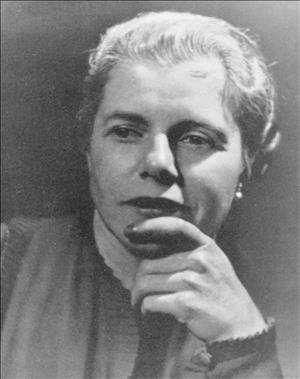On July 6, 1937, the Seattle unit of the WPA-sponsored Federal Theatre Project presents the opening night of Power, written by Arthur Arent and directed by Florence James. Co-sponsored by Seattle City Light and performed at the Metropolitan Theatre, the play examines “the history, use, abuse and control of power” (Flanagan, 306). The play lobs missiles in the controversy currently raging over municipal and private ownership of electrical power. Performances sell out amid vast publicity and audience enthusiasm, and elicit denunciations from the Seattle Post-Intelligencer and The Seattle Times.
Power the Life of Industry
Excitement ran high in Seattle. Mayor John F. Dore (1881-1938) proclaimed June 21-28, 1937, “Power Week,” stating, “Power is the life of industry … within the boundaries of our state lies one-fifth of the nation’s potential water power” (quoted in Flanagan, 306). Co-sponsor Seattle City Light placed sodium vapor lights and large generators in front of the Metropolitan Theatre, creating an impressive spectacle. City Light also allowed Power promotional posters to be placed on their electrical poles throughout Seattle, and issued invitations to the performance. The invitations were designed in such a way that they appeared at first glance to be electric bills.
The Federal Theatre Project's segregated (white) unit, the Federal Players, joined forces with the Vaudeville/Variety unit in order to mount the production, which had more than 200 speaking roles. It was Seattle’s first experience with the Federal Theatre Project’s Living Newspaper format, which utilized current events in simple but powerful dramatizations. Competition between the publicly owned Seattle City Light and the privately held Puget Sound Power and Light was so intense at the time that both companies were stringing their own power lines along the same streets. As Florence James wrote, “Power in the Puget Sound area then was locked in a struggle between private and municipal ownership. Several new dams were being built, and kilowatt hour was on everyone’s mind” (James, FISTS manuscript).
Accolades and Attacks
Audience response was strongly enthusiastic. The five scheduled performances sold out, generating $4,000 income with tickets priced at 25 cents and 40 cents apiece. Yet the Seattle press attacked Florence and Burton James for spreading what they deemed to be propaganda. Hallie Flanagan (1890-1969), national director of the Federal Theatre Project, reported that "The Post-Intelligencer said, 'Propaganda for public ownership. Private utilities are assailed, satirized, ridiculed, exposed, attacked, and condemned.' And The Seattle Times: 'That Old Debbil, the Power Trust, is the villain and the TVA [Tennessee Valley Authority, a New Deal project charged with integrated resource management] is the hero in as fine a piece of overdone propaganda as ever trod the boards’” (quoted in Flanagan, 307).
Washington State WPA Administrator Don G. Abel was outraged. Florence and Burton James resigned their positions with the Federal Theatre Project. The Project was retrenched and directed toward children’s productions and vaudeville in the parks. Seattle’s Federal Theatre Project units were never again to arouse such controversy, nor to venture so far from the middle ground.

